#trany
Text







#jargon upk#throwie#graffiti#art#artist on tumblr#jargon#lettering#design#tags#la graffiti#graffiti photography#los angeles graffiti#long beach graffiti#graffitiporn#graffiti character#graffiti art#trany
3 notes
·
View notes
Text

T R A N I
266 notes
·
View notes
Text


Trani
Dentro certi tramonti,
sei sempre a casa.
z.o.3
#frammentidicuore#frasi#frasi di vita#riflessioni#frasi profonde#parole#amore#pensieri#vita#cit#cielo#tranquillità#trani#bari#frasi tramonto#tramonto#sole#frasi belle#frasi tumblr#frasi malinconiche#malinconia#distanza#aforismi#frasi brevi#dediche#cose belle#dolcezza#amicizia#emozioni#abbraccio
57 notes
·
View notes
Note
Hi!
If you don’t mind me asking, which parent do you think Sisi and each of her siblings looked more like?
I think Helene looked like Max, Sisi, Maria Sophie, Mathilde and Sophie Charlotte looked like Ludovika and Karl Theodor, Ludwig Wilhelm anc Maximilian Emmanuel looked like a mix of their parents.
Hi! No I don't mind at all, I like this type of questions since I usually don't talk much about these kind of things.
Personally I agree on you with Elisabeth and Mathilde, they both looked a lot like their mom:
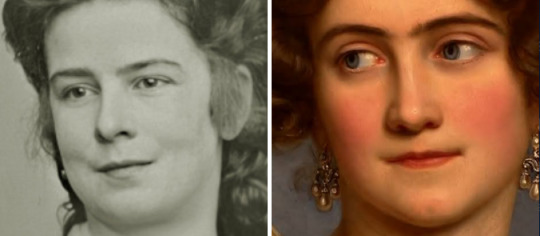
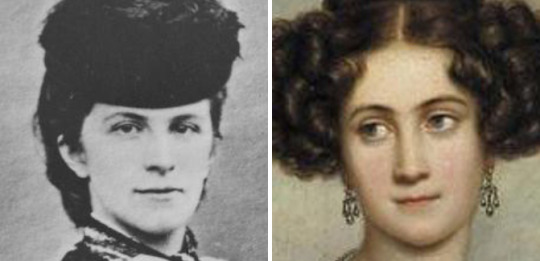
To me Marie resembled a bit more to her dad, specially the shape of her face (notice how they both had the same parted chin)
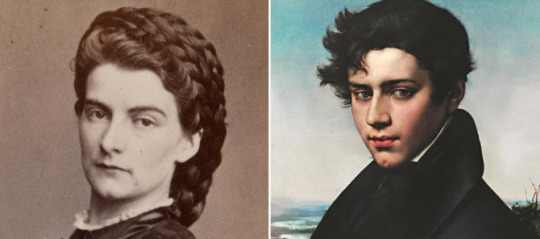
I don't think Sophie resembled particularly to one of her parents, tho as an older woman I think she looked a lot like her grandmother Queen Caroline.
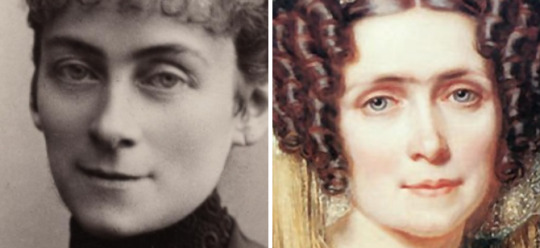
With Helene I can't settle, to be honest. Here is a comparison with her parents' portraits. Maybe she also looked more like a grandparent?

As for the guys: I also think they looked like a mix of their parents, tho as he grew older Ludwig Wilhelm resembled more to his dad.



In general you can see the family resemblance (remember Ludovika and Max were cousins lol) in all the kids, tho I wish we had more portraits, or better, actual pictures of their parents in their youth to compare them better.
#i tried to use different pics of max and ludovika but at the end i gave up jhjhjgk#asks#ludovika of bavaria duchess in bavaria#empress elisabeth of austria#queen marie sophie of the two sicilies#mathilde in bavaria countess of trani#sophie in bavaria duchesse d'aleçon#helene in bavaria hereditary princess of thurn und taxis#duke maximilian emanuel in bavaria#duke ludwig wilhelm in bavaria#karl theodor duke in bavaria#queen caroline of bavaria#maximilian joseph duke in bavaria
7 notes
·
View notes
Text

vicdeangelis: Bought you flowers🌹- 16.05.2022
#måneskin#maneskin#victoria de angelis#måneskin + flowers 🌹#måneskin + sunglasses 🕶#italy: trani#my posts 💫#instagram
233 notes
·
View notes
Photo





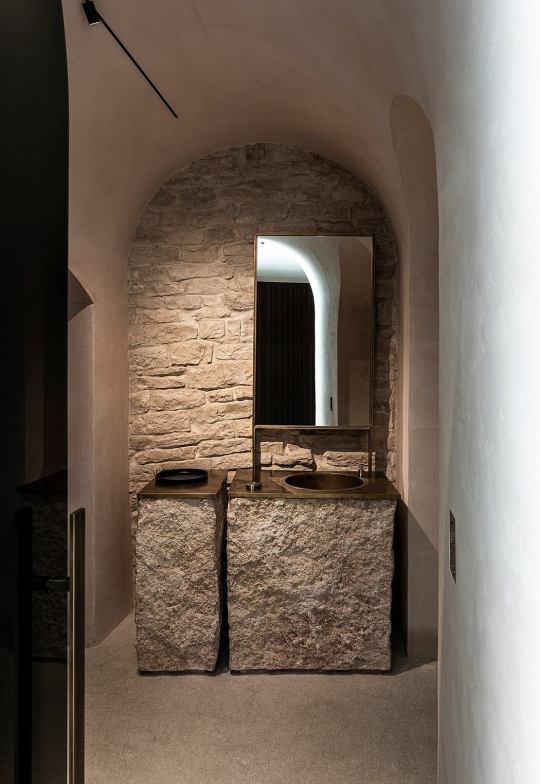




No Church Inside, Trani, Italy,
Piertito Cardillo Studio,
Vito Corvasce Photography
#art#design#architecture#church#renovation#trani#italy#piertilo cardillo#luxurylifestyle#luxuryhouses#luxuryhomes#luxurypad#ultimatepad
116 notes
·
View notes
Text
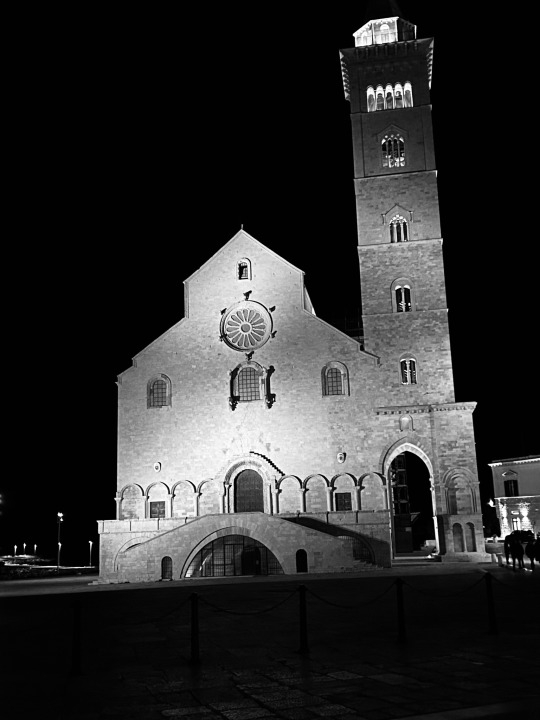

Trani - Basilica Cattedrale
6 notes
·
View notes
Photo

Simona Weller. Il segno è l'esemplare parlato, Text by Barbara Tosi, Interview with Simona Weller by Enrico Cocuccioni, Centro Culturale Spazio Alternativo, Roma, 1983 [Exhibitions: Centro Culturale Spazio Alternativo, Roma, May 16 – June 4, 1983; Museo Diocesano, Trani (BT), June 11-30, 1983]
#graphic design#art#drawing#visual writing#exhibition#catalogue#catalog#cover#simona weller#barbara tosi#enrico cocuccioni#centro culturale spazio alternativo roma#museo diocesano di trani#1980s
17 notes
·
View notes
Text


the man that you are
6 notes
·
View notes
Text

Debutterà 👏🏼su👏🏼rai1👏🏼come👏🏼 protagonista 👏🏼
#l'amore della mia vita#tra l'altro indovinate chi probabilmente andrà a trani quest'estate quando già avranno finito di girarla quella serie#uffa
4 notes
·
View notes
Text
Trani, 19:46


Scegli sempre la bellezza
di ciò che è bello per te.
Z.o.3
#frammentidicuore#frasi#riflessioni#frasi profonde#parole#amore#pensieri#vita#aforismi#tramonto#sole#trani#Puglia#photograph#phtography#sunset#sunshine#sun#italy#cose belle#frasi belle#citazioni tumblr#frasi tumblr#poesia#scegliere#essere se stessi#felicità#sentimenti#emozioni#frasi motivazionali
61 notes
·
View notes
Photo




Zombi Holocaust (1980)
Flora Film
Dir. Marino Girolami
Practical special effects by Maurizio Trani
#zombi holocaust#ian mcculloch#zombie#1980s horror movies#dr butcher md#maurizio trani#practical special effects
51 notes
·
View notes
Note
Who are all of the children of Maximilian in Bavaria and Ludovika in Bavaria? I only know Sisi
Hello! Sorry it took me so long, I’ve been putting together this answer for a while. This is a somewhat basic introduction to the siblings, since I didn’t want this post to be even longer than already is.
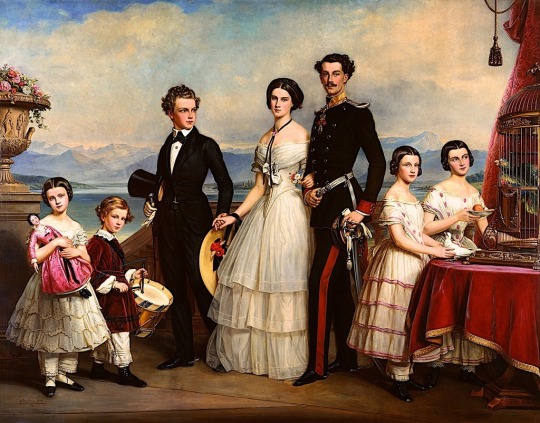
Duke Maximilian and Duchess Ludovika had a total of ten children, five girls and five boys. Their second son, Wilhelm Karl, sadly died at a month and half old, and their fourth son, Maximilian, was stillborn. The surviving eight children were (by order of birth): Ludwig Wilhelm, Helene, Elisabeth, Karl Theodor, Marie, Mathilde, Sophie and Maximilian Emanuel.

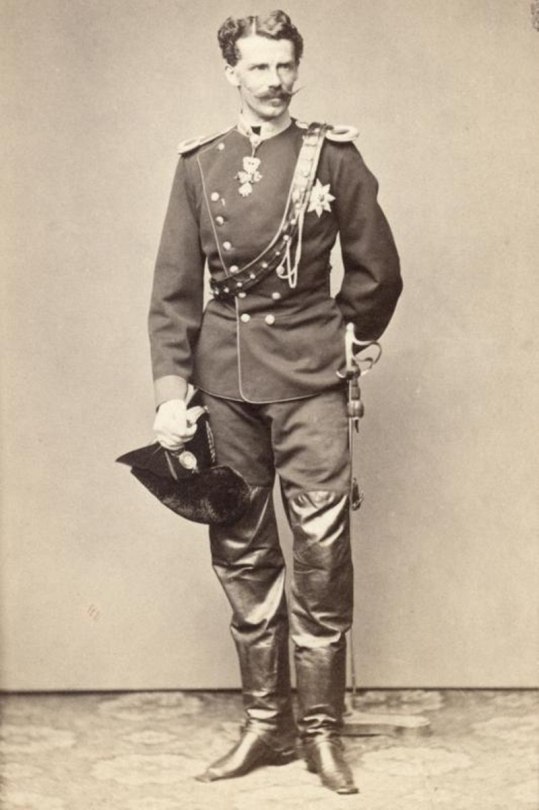
The eldest, Ludwig Wilhelm, born in 1831, was always known as “Louis” in his family. In 1858 he gave up his position as the future head of the Dukes in Bavaria branch in order to marry his mistress, former actress Henriette Mendel. He seems to have been somewhat difficult, at least judging by something Elisabeth told to her lady-in-waiting Countess Mária Festetics: “It is a good thing that Henriette is his wife, for anybody else would long since have left him, and he is happy with her.” What does this exactly mean I have no idea. Louis and Henriette had two children, Marie (born a year before her parents marriage) and Karl, who died as a baby. As was customary for Wittelsbach princes he did a military career, and in 1866 fought in the Seven Weeks War. We don’t really have much more information about him; many accounts about the Duke and his family that come after the Mayerling affair, in which his daughter Marie Larisch played a key role as the go-between Crown Prince Rudolf and Mary Vetsera, are heavily affected by the negative reputation that had befallen over her. His relationship with his sister wasn’t unaffected by this either, and he and Elisabeth became distant, though Elisabeth’s daughter Marie Valerie still wrote affectionately of her “Aunt Henriette”, so it may have been more out of a sense of awkwardness than Louis being directly blamed for the affair. He went to Elisabeth’s funeral, visibly affected by his sister’s death, and was one of the men who took her coffin to the Capuchin Crypt. A year after his wife’s death in 1891 he married actress Antonie Barth, forty years his junior. This marriage ended up in a divorce in 1913, after she had a child whom Louis claimed wasn’t his (I found some gossip articles about this on newspapers but that’s a whole rabbit hole I haven’t gone down yet). Ludwig Wilhelm died in Munich 1920, aged eighty-nine-years-old.
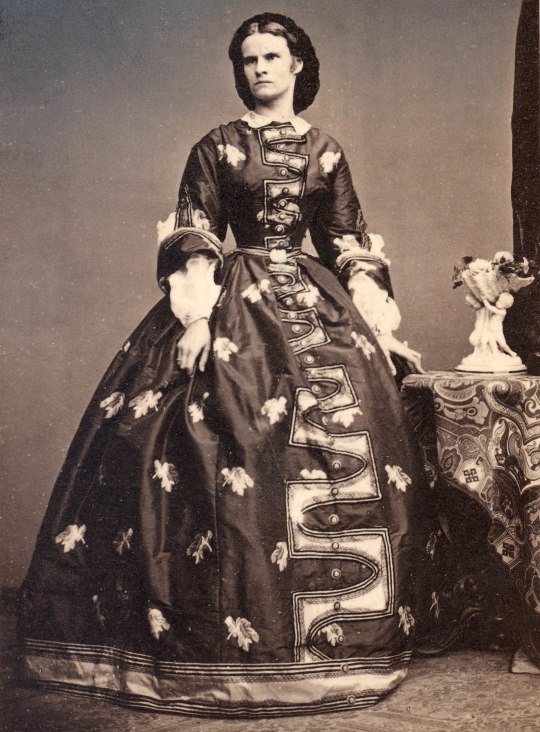

Born in 1834, the third child an eldest daughter, Helene, nicknamed “Nené” and “Lenza”, is probably the most known of Sisi’s siblings, and also the most misrepresented. She has gone down in history for being the disciplined, exemplary daughter that was groomed for years to become empress only to have “her fiancé” stolen by her younger sister. Except that none of this is true. In her old age Ludovika often complained that Helene had been a troublesome child who had caused her a lot of grievances. And it’s unlikely that Helene had ever expected, let alone been prepared, to become empress years in advance: not only there had been serious attempts to get Princess Anna of Prussia’s hand for Franz Josef in 1852 (why would they have done this if Helene was supposedly waiting in the wings to marry him?), but also when Ludovika was told that the emperor wanted to marry Sisi she became very emotional “for in her great modesty she had always doubted that the Emperor would really think in one of her daughters”.
By late 1857 Ludovika lamented that her daughter had pretty much become a spinster. But in the beginning of 1858 Helene met Maximilian, Hereditary Prince of Thurn und Taxis, and soon after he proposed. This marriage wasn’t well received by King Maximilian II, since the Taxis were subjects of the Bavarian king and therefore not equal to marry a Wittelsbach, but eventually King Max gave them the all-clear and they married. Reportedly the marriage was happy, but her husband sadly died only ten years later of an illness, and she fell into a deep grief. When Helene’s father-in-law died in 1871 she became the de facto head of the house of Thurn und Taxis until her son Maximilian reached the majority. Helene was sadly to suffer two more big blows in her life: in 1881 her daughter Elisabeth died of childbirth complications aged only 20-years-old, and in 1885 her son Maximilian died of cardiac problems aged only 24-years-old. Helene’s last years are said to have been very sad, since she never recovered from the untimely deaths of her husband and children. She died in 1890 at the age of 56, likely of cancer. At her deathbed were her two surviving children, Louise and Albert, and her sister Elisabeth.

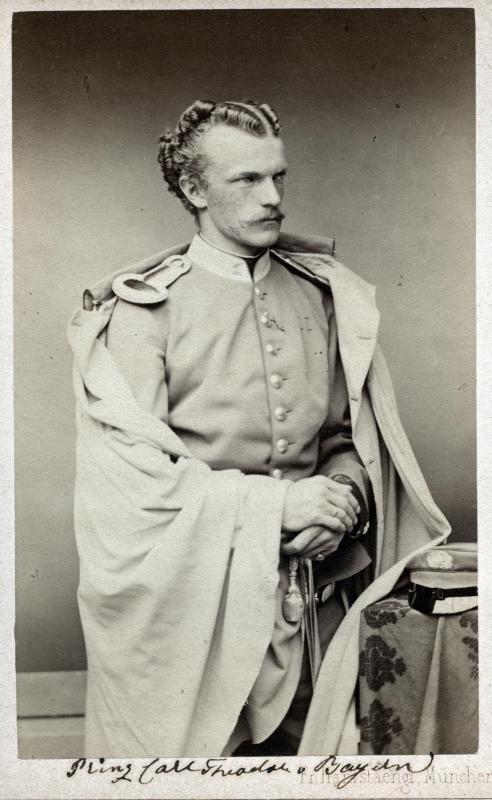
The fifth child and third son, Karl Theodor, called “Gackl” by his family, was Elisabeth’s favorite brother. He seems to have been a very charismatic man, since everyone that met him had nothing but good things to say about him. In 1865 he married his first cousin Princess Sophie of Saxony, and they had one daughter, Amalie. Sadly Sophie’s health was severely affected by childbirth, and died over a year later of influenza. Like his elder brother he also did a military career starting from a young age, and fougth in the Seven Weeks War. However, afterwards he left active service and went to the Ludwig Maximilian University of Munich, where he studied medicine. His studies were interrupted by the Franco-Prussian War, but he got his degree as a doctor in medicine, later specializing in ophtalmology. During this time Karl Theodor had remained a widower, but in 1874, seven years after his wife’s passing, he married Infanta Maria José of Portugal, daughter of the deposed King Miguel I of Portugal and seventeen years his junior. They had five children: Sophie, Elisabeth, Marie Gabrielle, Ludwig Wilhelm and Franz Josef. Gackl became a renowned oculist, and in 1895 he opened the Augenklinik Herzog Carl Theodor (Duke Carl Theodor Eye Clinic) in Munich, which exists to this day. He personally operated thousands of people, assisted by Maria José, and later also by his daughters. Karl Theodor died in 1909, a few weeks after his 70th birthday, from bronchitis.


While Helene is the most known of Elisabeth’s sister solely because everyone and their moms know the (incorrect) story of her being “rejected” by FJ, the sixth child and third daughter, Marie, is the most famous sister for her own merits. She was the last Queen of the Two Sicilies as the wife of King Francesco II, and has gone down in history for leading the resistance during the Siege of Gaeta, the last stand of the Bourbon dynasty in Naples. She was only nineteen when her husband finally surrounded, and lived in exile for the rest of her life. After ten years of marriage Marie and her husband had one child, Maria Cristina, who sadly passed away while still a baby. They tried to have more children, but all her pregnancies ended up in miscarriages. She spent the rest of her life traveling; when WWI broke she settled down in Munich, where she died aged 82 in 1925.
Marie has gotten an interesting reputation: she is either known for being the brave queen who stood up next to her troops until the end, or for being a haughty woman who deeply envied her imperial sister and lived full of resentment. The first is just one, although crucial, brief moment in her life; and the second is literally just what Mária Festetics, one of Elisabeth’s ladies-in-waiting, thought of her. Once I realized how little we actually knew about Marie, how much is just hearsay and speculation, she became fascinating to me, but sadly we still don’t have a good biography about her that uses primary sources instead of relying in gossipy second hand accounts.
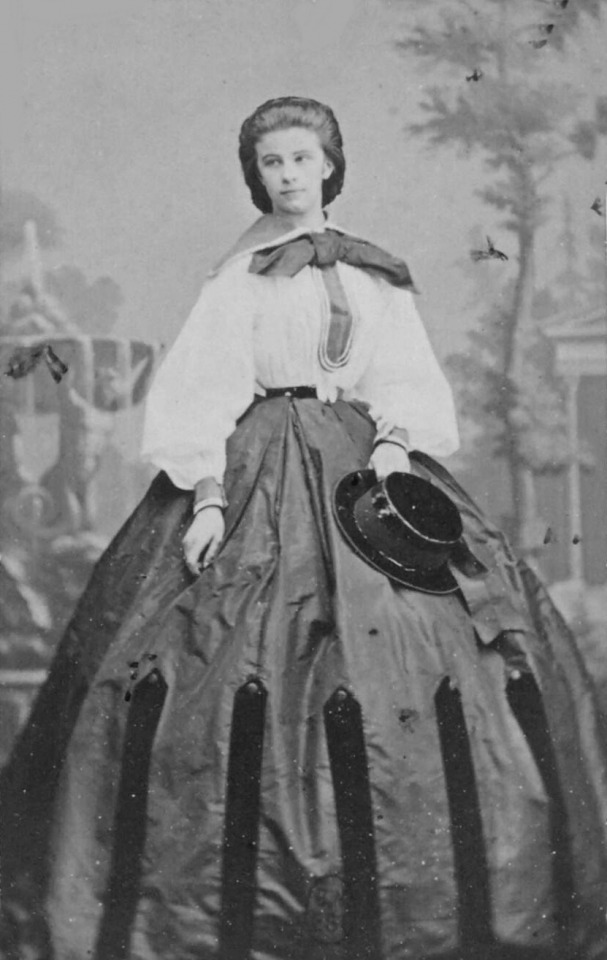

Mathilde, called “Spatz” (Sparrow), is the sister we have the least information of. She and Marie were the closest of the sisters; they were always together, and would often even dress the same (as you can see in the Stieler portrait). In 1861 Mathilde married Prince Luigi, Count of Trani, half-brother of Marie’s husband, and joined her sister in Rome, were the Bourbons in exile had settled their court. The marriage turned out to be unhappy, since her husband was an alcoholic and cheated on her, though they did had one child: Maria Teresa, called “Mädi”, born in 1867. Mathilde and Luigi separated eventually, though she did went to his aid and nurse him when he was sick. But the person she dedicated her life was her daughter, who for many years suffered from poor health (likely sclerosis); Mathilde took care of Mädi until her death, aged only 42. She spent the last years of her life with her sister Marie, and died only months after her, in 1925.


The youngest daughter, Sophie, born in 1847, is probably the most “romantic” of the Wittelsbach sisters. Just like Helene she has gone down in history for being a “rejected bride”, though in her case, it’s actually true. She was briefly engaged to her cousin Ludwig II of Bavaria, and it was an absolute disaster: he had no interest in marriage (not really that surprising when you consider that he was gay) and often publicly snubbed Sophie; she in turn was absolutely miserable because she felt he was playing with her. Ludwig kept postponing the wedding until Sophie’s father, Duke Max, send him an ultimatum, to which the king responded by just canceling it. As if these months hadn’t been stressful enough for Sophie, during this time she also had an affair with Edgar Hanfstaengl, the son of the court photographer. I don’t really know much about this liaison, only that she was aided by two ladies-in-waiting in order to meet him in private and that some love letters she wrote to him have survived. But whatever the extent of her feelings, the relationship could never become serious, and one year later she married Prince Ferdinand of Orléans, Duke of Alençon, a grandson of King Louis Philippe I of the French. I don’t know if this marriage was ever a love match or if Sophie simply wanted to settle down for good after all her failed romantic experiences; whatever the case they did have two children, Louise and Emmanuel. The Orléans had been living in exile in England since the deposition of Louis Philippe, and only after the fall of the Second French Empire in 1872 were they allowed to return to France. This probably improved Sophie’s mood, since she had suffered from depression since her children’s birth, and the English weather didn’t make her feel better.
After the death of her former fiancé Ludwig II in 1886, Sophie fell ill and on advice of her brother Gackl she searched for a treatment in Munich under a Dr Glaser. But while he treated her she fell in love with her doctor, who was also married with children. This time Sophie didn’t want to give up her enamored, and did something unthinkable for a woman of her status in the 19th century: she sought for a divorce from Ferdinand. Sadly things didn’t work out for her, because her husband, on the advice of her brother Karl Theodor, retaliated by having Sophie interned in a mental clinic for “moral insanity”, where she suffered the appalling “treatments” for mental illnesses of the time. After seven months she was considered cured, and allowed to leave the institution. She never again tried to divorce.
Sophie dedicated the last years of her life to charity work. In 1897 she was one of the organizers of the Bazar de la Charité, an annual charity event held in Paris since 1885, and was in the place when an accident set it on fire, taking the lives of 126 victims. She was one of the victims of the fire, and although she had the chance to leave she refused she refused to abandon the Bazar until everyone else was out, guiding and helping people to find the exist until her last moments. She had been fifty-years-old.


Lastly the youngest child Maximilian Emanuel, nicknamed “Mapperl”, is the brother we know the least about. Born in 1849, he was only two years and a half younger than his sister Sophie, whom he was the closest to: they were often referred as “die Kleinen” (the little ones). As his eldest brothers he did a military career, and fought both in the Seven Weeks War (aged only sixteen!) and in the Franco-Prussian War. At Sophie’s wedding he met and fell for a cousin of the groom, Princess Amalie of Saxe-Coburg and Gotha, which would have been great… if she hadn’t been already engaged to Prince Leopold of Bavaria. Here’s when things get a bit messy: according Briggitte Hamann, Elisabeth found out about the situation and decided to step in and free Mapperl’s beloved… by introducing her daughter Gisela to Leopold. Which is. Hmmm. A questionable thing to do. However, other authors claim that Elisabeth actually had nothing to do with that, specially considering that Mapperl’s wedding took place three years after Leopold and Gisela got engaged - if the goal was to make Amalie available, he definitely took his sweet time to make his move. One day I’ll look deep into it because I’m genuinely curious as to which is the truth; whatever the case, both couples had happy marriages, so good for them. Max Emanuel and Amalie had three sons: Siegfried, Christoph and Luitpold. Sadly Max Emanuel died quite unexpectedly in 1893 from an ulcer, aged only 43-years-old.
Again, this is only an introduction to the siblings, there’s far more information out there that I could possibly put in a single post. Thank you for your question! The Dukes and Duchesses in Bavaria are really interesting an I think they deserve the spotlight as much as their imperial sister.
#a lot of this i wrote from memory + copying my own previous posts + checking dates and names on wikipedia#so please forgive my lack of sources and sorry if there are mistakes!#house of wittelsbach#duke ludwig wilhelm in bavaria#helene in bavaria hereditary princess of thurn und taxis#karl theodor duke in bavaria#queen marie sophie of the two sicilies#mathilde in bavaria countess of trani#sophie in bavaria duchesse d'aleçon#duke maximilian emanuel in bavaria#asks
16 notes
·
View notes
Text
Måneskin on TikTok, 16.05.2022
Ethan disapproved
#måneskin#maneskin#ethan torchio#damiano david#victoria de angelis#thomas raggi#tiktok#video#my posts 💫#italy: trani#mr. torchio + bun#måneskin + sunglasses 🕶#👅#✌🏻 & 🤟🏻#måneskin in a silly goofy mood 🤪#må smiling 😁#💋#supermodel#vic doing that face#måneskin with cigarettes or smoking 🚬
137 notes
·
View notes

